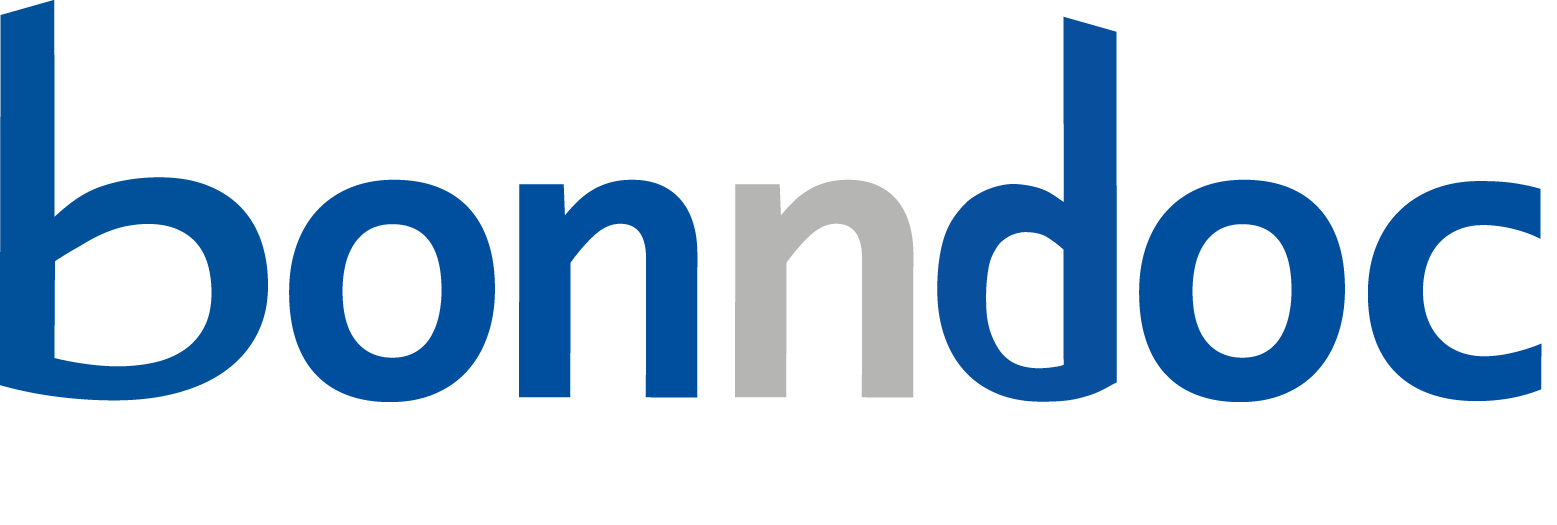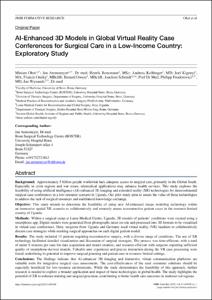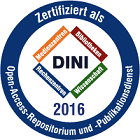AI-Enhanced 3D Models in Global Virtual Reality Case Conferences for Surgical Care in a Low-Income CountryExploratory Study

AI-Enhanced 3D Models in Global Virtual Reality Case Conferences for Surgical Care in a Low-Income Country
Exploratory Study

| dc.contributor.author | Obst, Miriam | |
| dc.contributor.author | Arensmeyer, Jan | |
| dc.contributor.author | Bonsmann, Henrik | |
| dc.contributor.author | Kolbinger, Andreas | |
| dc.contributor.author | Kigenyi, Joel | |
| dc.contributor.author | Oneka, Francis | |
| dc.contributor.author | Owere, Benard | |
| dc.contributor.author | Schmidt, Joachim | |
| dc.contributor.author | Feodorovici, Philipp | |
| dc.contributor.author | Wynands, Jan | |
| dc.date.accessioned | 2025-11-05T17:38:49Z | |
| dc.date.available | 2025-11-05T17:38:49Z | |
| dc.date.issued | 18.08.2025 | |
| dc.identifier.uri | https://hdl.handle.net/20.500.11811/13634 | |
| dc.description.abstract | Background: Approximately 5 billion people worldwide lack adequate access to surgical care, primarily in the Global South. Especially in crisis regions and war zones, telemedical applications may enhance health services. This study explores the feasibility of using artificial intelligence (AI)-enhanced 3D imaging and extended reality (XR) technologies for intercontinental surgical case conferences in a low-resource scenario in Uganda. Our pilot study aims to assess the value of these technologies to address the lack of surgical resources and multilateral knowledge exchange. Objective: This study intends to determine the feasibility of using new AI-enhanced image modeling technology within an immersive spatial XR scenario to collaboratively and remotely assess reconstructive patient cases in the resource-limited country of Uganda. Methods: Within a surgical camp at Lamu Medical Centre, Uganda, 3D models of patients’ conditions were created using a smartphone app. Digital models were generated from photographs taken on-site and processed into 3D formats to be visualized in virtual case conferences. Here, surgeons from Uganda and Germany used virtual reality (VR) headsets to collaboratively discuss case strategies while marking surgical approaches on each digital patient model. Results: The study included 15 patients requiring reconstructive surgery, with a diverse range of conditions. The use of XR technology facilitated detailed visualization and discussion of surgical strategies. The process was time-efficient, with a total of under 8 minutes per case for data acquisition and model creation, and resource-efficient with surgeons reporting sufficient quality of smartphone-derived models. Valuable user experience and precise interaction during the VR case processing were found, underlining its potential to improve surgical planning and patient care in resource-limited settings. Conclusions: The findings indicate that AI-enhanced 3D imaging and immersive virtual communication platforms are valuable tools for integrative surgical case assessments. The cost-effectiveness of the used consumer solutions should be especially beneficial for low-resource environments. While the study demonstrates the feasibility of this approach, further research is needed to explore a broader application and impact of these technologies in global health. The study highlights the potential of XR to enhance training and surgical precision, contributing to better health care outcomes in underserved regions. | en |
| dc.format.extent | 12 | |
| dc.language.iso | eng | |
| dc.rights | Namensnennung 4.0 International | |
| dc.rights.uri | http://creativecommons.org/licenses/by/4.0/ | |
| dc.subject | 3D scanning | |
| dc.subject | artificial intelligence | |
| dc.subject | virtual reality | |
| dc.subject | extended reality | |
| dc.subject | metaverse | |
| dc.subject | spatial computing | |
| dc.subject | global surgery | |
| dc.subject | reconstructive surgery | |
| dc.subject.ddc | 004 Informatik | |
| dc.subject.ddc | 610 Medizin, Gesundheit | |
| dc.title | AI-Enhanced 3D Models in Global Virtual Reality Case Conferences for Surgical Care in a Low-Income Country | |
| dc.title.alternative | Exploratory Study | |
| dc.type | Wissenschaftlicher Artikel | |
| dc.publisher.name | JMIR Publications | |
| dc.publisher.location | Toronto | |
| dc.rights.accessRights | openAccess | |
| dcterms.bibliographicCitation.volume | 2025, vol. 9 | |
| dcterms.bibliographicCitation.issue | e69300 | |
| dcterms.bibliographicCitation.pagestart | 1 | |
| dcterms.bibliographicCitation.pageend | 12 | |
| dc.relation.doi | https://doi.org/10.2196/69300 | |
| dcterms.bibliographicCitation.journaltitle | JMIR formative research | |
| ulbbn.pubtype | Zweitveröffentlichung | |
| dc.version | publishedVersion | |
| ulbbn.sponsorship.oaUnifund | OA-Förderung Universität Bonn |
Dateien zu dieser Ressource
Das Dokument erscheint in:
-
Publikationen (4)




